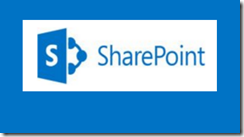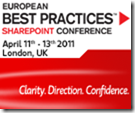I will be speaking at the Cleveland SharePoint User Group on Wednesday, October 24th. The meeting will start at 5:00pm. My topic will be "SharePoint 2013: An Overview of the New Features for IT-Pros”. Here’s a brief description of the talk:
Like every new release the SharePoint 2013 Preview Beta has generated a lot of “buzz” over the last few months. But the important question is, “What’s in it for me and my organization?” In this talk we’ll try to provide an overview, with demos, of the most significant new features for end users and the administrators who manage SharePoint environments. This will not include the new “App” model for developers which will require its own separate discussion. Here are the topics I will cover:
- Search – many of the new features in SharePoint 2013 leverage a new Search engine that incorporates everything Microsoft has learned from its FAST Search acquisition
- Web content management – a new search based page navigation environment that offers better flexibility and control
- Mobile – improvements have been made to how SharePoint is displayed and used on a variety of mobile devices
- Records management – a new eDiscovery process takes records management and compliance to the next level
- Social computing – a more intuitive way to share, follow, and collaborate on information using familiar social networking paradigms
- Upgrade – only the database attach method remains, but there have been significant improvements to the process
You are invited to participate in the Cleveland SharePoint Group! Cleveland’s forum to share and collaborate on SharePoint as an application, development platform, and integration framework.
Cleveland SharePoint Group Presents
Wednesday, October 24th from 5pm – 7pm
Register for the Event
Cleveland Microsoft Office at 6050 Oak Tree Blvd.
Independence, 44131




